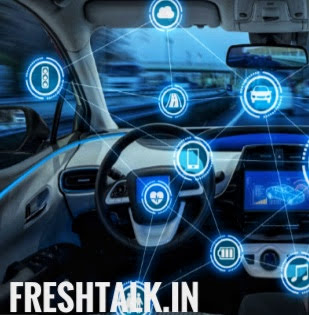Driverless vehicles permit transportation and urban communities to be arranged in a totally new and progressive way since innovation is interminably greater at driving vehicles than people are. Sci-fi? No, presumably not. This discussion has advanced from talking about whether we will have self-governing vehicles to when they will end up being a reality.
An independent vehicle is constrained by a programmed driving framework that needn’t bother with a physical driver. Most vehicle producers are as of now working strongly on ventures in this field, and even organizations like Google and Apple are in the race. “We are going towards a time when self-governing vehicles will be the new standard,” says Kristian Palm, Head of Business Unit at Cybercom, who is engaged with the improvement of the new innovation.
A case of a key job for Cybercom is as reconciliation and programming advancement accomplice in the SCOOP@F venture. This undertaking was started by the French government and the EU in association with automobile producers Renault and Peugeot. In the years to come, an immense number of new vehicles will be outfitted with Intelligent Transport Systems (ITS). ITS depends on remote innovation that empowers vehicles to speak with each other by means of Vehicle to Vehicle (V2V) and with overhead traffic frameworks through Vehicle to Infrastructure (V2I).
The frameworks are key bits of the riddle in a universe of independent vehicles, as they can consider the occasions around them on the streets and procedure the direction, speed and goals of different vehicles. “They acquire data on everything from mishaps ahead, dangerous street conditions and left vehicles to the speed of different vehicles and walkers, all while preparing this data exponentially quicker than human drivers,” says Kristian. At first, the V2X frameworks (Vehicle to everything) will fundamentally be utilized for Advanced Driver Assistance Systems (ADAS), before being formed into completely self-governing driving. This implies, for instance, that drivers could be helped with slowing down before they figure out how to respond to outer elements, in this way maintaining a strategic distance from crashes.
Self-governing driving ordinarily alludes to self-driving vehicles or transport frameworks that move without the intercession of a human driver. In 2014, SAE International (Society of Automotive Engineers) distributed the J3016 standard to characterize the different improvement levels up to completely independent vehicles. The levels for self-sufficient driving reach from Level 0 (no computerization) up to Level 5 (full vehicle self-rule).
Self-driving vehicles utilize a wide scope of advancements like radar, cameras, ultrasound, and radio receiving wires to explore securely on our streets.
In present-day self-ruling vehicles, these innovations are utilized related to each other, as everyone gives a layer of independence that helps make the whole framework progressively solid and powerful.
For instance, Tesla’s driverless vehicle innovation, known as “Autopilot”, utilizes eight cameras to give 360-degree permeability, while twelve ultrasonic sensors and a forward-looking radar work to dissect the vehicle’s environmental factors for potential perils.
In any case, one key part still being developed that will, at last, make independent vehicles increasingly solid is the execution of 5G cell systems.
Like the 4G LTE associations we’re acquainted with on our cell phones, 5G is a kind of portable broadband that considers the remote exchange of information starting with one gadget then onto the next, just at a whole lot quicker rate.

A self-ruling vehicle is a vehicle equipped for detecting its condition and working without human inclusion. A human traveller isn’t required to assume responsibility for the vehicle whenever, nor is a human traveller required to be available in the vehicle by any stretch of the imagination. A self-ruling vehicle can go anyplace a conventional vehicle proceeds to do everything that an accomplished human driver does.
Independent vehicles depend on sensors, actuators, complex calculations, AI frameworks, and ground-breaking processors to execute programming.
Independent vehicles make and keep up a guide of their environmental factors dependent on an assortment of sensors arranged in various pieces of the vehicle. Radar sensors screen the situation of close by vehicles. Camcorders recognize traffic lights, read street signs, track different vehicles, and search for people on foot. Lidar (light recognition and extending) sensors skip beats of light off the vehicle’s environmental factors to gauge separations, distinguish street edges, and recognize path markings. Ultrasonic sensors in the wheels recognize controls and different vehicles when leaving.
Advanced programming at that point forms this tangible information, plots away, and sends guidelines to the vehicle’s actuators, which control increasing speed, slowing down, and directing. Hard-coded rules, obstruction shirking calculations, prescient displaying, and item acknowledgement help the product keep traffic runs and explore impediments.

